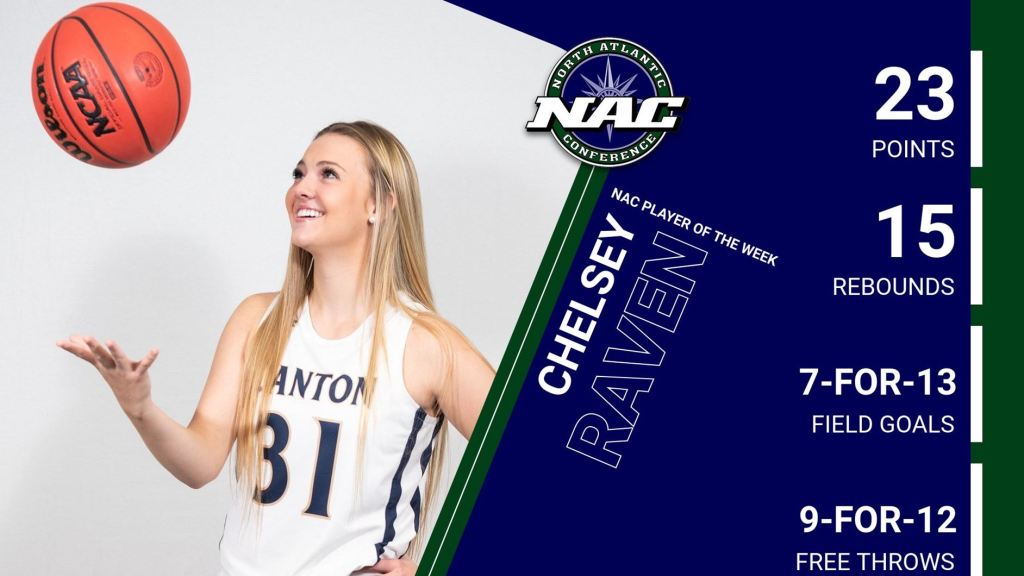The “Weekly” Blab
Volume 15, Issue 15: March 30, 2022
These Were the Weeks That Were
You’d think that our recent spring break would have given some opportunities for a little R&R, but that didn’t quite prove to be the case. I took Monday of that week off almost entirely, but I worked on Wednesday and Thursday, with Tuesday, some of Thursday, and Friday set aside for taking my father to various scheduled medical appointments. This past week included a SUNY presidents meeting: driving to Albany on Monday, meeting all day on Tuesday, attending a reception for legislators on Tuesday evening, and talking to the Assembly’s Higher Education Committee chair on Wednesday morning and then driving home. Of course, the regular work doesn’t stop, so I had meetings almost back-to-back starting Wednesday evening and all day Thursday and Friday.
This past Saturday was the most fun, with two admitted-student receptions in the morning, both of which were well attended with lots of happy students and their families. On Saturday afternoon, the College hosted a comic book convention—the first since I became president! I found out about this a few weeks ago from our student government and was asked if I would be willing to exhibit some of my collection and if I would give a talk. Needless to say, my answer to both questions was “yes!”
I didn’t have much time to pull stuff together, so I selected a bunch of comics, books, and related materials that were close at hand for the exhibit. I thought that the greatest interest would be in seeing some copies from the “golden age”—a Batman #25 (from 1942 or so), and a Flash #68 (also from the 1940s)—and “silver age” copies of Flash #123 (the first comic book story involving a multiverse), and Spider-man #33 (widely viewed as the best Spider-man story of all time), all of which are quite pricey today. I also had a reproduction of Action #1 on the table, and several people asked me if they could touch it and if it was an original, with me laughing and telling them if it was, it would be worth about $3 million and locked in a vault. While several students were impressed with these key issues, more were interested in an Usagi Yojimbo #1, an anime comic involving a rabbit who is a ronin, since anime is so popular these days. I also had a copy of the Archie comic that I had appeared in, which several people asked to look at.
The talk I gave was about racism and sexism in comics, which have a long and troubling history. While some people have tried to excuse the racism and sexism in comics as a “product of the times” between 1938 and 1968, I also showed several examples of comics that were amazingly progressive about these issues that were published during the same period. The bottom line is that it was always possible to do the right thing, but most publishers/editors/writers/artists didn’t even try and went along with the stereotyping and scapegoating that was all too common then, and to a lesser extent even now.
Congratulations
Some good things have been happening on the campus lately. Here’s the rundown:
Congratulations to our student Brooke Ayers, who is a Criminal Investigation senior. Brooke was on a ride-along with Deputy Matthew Merria at 1:42 AM on March 9, when he responded to a domestic violence incident where a man shot his girlfriend in the neck. Deputy Sheriff Merria subdued, disarmed, and arrested the suspect, while Brooke (wearing a body-cam) helped by providing medical assistance to and consoling the victim, as well as going through a series of questions regarding the incident, until an ambulance arrived 24 minutes later. The Sheriff’s Department gave an award to Brooke last Thursday at a ceremony held in Dana Hall, and I presented her with the College’s “Roosponding to the Crisis” award. Congratulations Brooke!
Associate Professor and co-Chief Diversity Officer Emily Hamilton-Honey was featured in the Watertown Daily News this past week about co-authoring a recent book, Nineteenth-Century American Women Writers and Theologies of the Afterlife: A Step Closer to Heaven. Her co-author is Associate Professor Jennifer McFarlane-Harris of Seattle Pacific College. The anthology was published by Routledge, Taylor & Francis. You can read more about Prof. Hamilton-Honey’s work here.

- Two members of our Women’s Lacrosse Team won Athlete of the Week honors from our NAC conference this week. Stephanie Thayer scored six points and five goals, picking up seven ground balls and causing two turnovers in a 14-3 win against SUNY Poly, earning her Player of the Week accolades. Joining her was Lindsey Wunder who earned Defensive Player of the Week honors, with eight ground balls, four caused turnovers, and three draw controls, while also scoring a goal and getting an assist. Congratulations ladies!
More Florida Craziness
As if the University of Florida and other Florida colleges don’t have enough problems, the Chronicle of Higher Education recently reported that the Florida state legislature passed a bill to (among other things) require all public colleges to regularly find a new accrediting body. The official summary of the legislative bill (# PCB PEL 22-01) says that it:
- Prohibits a state college or state university from being accredited by the same accrediting agency or association for consecutive accreditation cycles and requires state colleges and state universities to seek and obtain accreditation from an accrediting agency or association other than their current accrediting agency or association.
- Provides a cause of action against an accrediting agency or association by a postsecondary education institution that has been negatively impacted by retaliatory action taken against the postsecondary education institution by an accrediting agency or association.”
I’ve seen a lot of strange things in my 40 years in higher education, but this is about the most bizarre one yet.
For those who don’t know, all good colleges are accredited by what were formerly known as a regional accrediting bodies, ours being MSCHE, the Middle States Commission on Higher Education. There was one for each part of the country—Middle States covering NY, NJ, PA, DE, and MD. The accrediting body that covers Florida and other southern states is called SACS, the Southern Association of Colleges and Schools. The accreditation world changed a bit in 2019 during the Trump administration, which instituted a rule allowing the regional agencies to become national. The change would allow a college in New York, for example, to be accredited by SACS if for some reason they wanted to do that, and if SACS would allow them to go into candidacy. The rationale for this change was to provide more competition among accreditors. Whether this is a good or bad idea is debatable and an even-handed look at the question can be found here.
Since I worked at a Georgia university between 2005 and 2014, I am intimately familiar with SACS, which (like most things) has its own good and not so good aspects. They were widely viewed as the pickiest of the regional accrediting agencies, but they were also a regional body that was willing to challenge governors and legislators who tried to exercise undue influence on higher education. A big example of this happened in 1941, when Georgia’s Governor Eugene Talmadge, an avowed racist, moved to fire Walter Cocking, the Dean of the College of Education at the University of Georgia. Cocking’s crime? The Governor accused him of wanting to racially integrate a demonstration school and said he would remove any faculty member who supported “communism or racial equality”. The Georgia Board of Regents fired Cocking, but the President of the University of Georgia argued Cocking hadn’t been given due process. A hearing was held, and Cocking was reinstated. This angered the governor, and Talmadge proceeded to stack the Board of Regents with three of his cronies and fired Cocking and several other faculty and administrators. SACS responded by removing the accreditation of all of Georgia’s whites-only state colleges due to undue influence. Talmadge lost the 1942 election in part due to the blowback from this but won again a few years later.
Jumping back to the present, it turns out that SACS questioned the University of Florida about reports that they had prevented several faculty members from testifying in a voting-rights case (which I wrote about in a previous BLAB). Further, SACS asked for information about the presidential search at Florida State University, at which the state’s education commissioner was not only a candidate, but a member of its board. Was this new legislation a warning to SACS, telling them to back off? You be the judge.
As everyone should know, going through accreditation is a big deal and the process requires lots of time and effort, not to mention expense. Changing accreditation bodies each cycle would require even more work, since each agency is different. What’s more, only one of the formerly regional accreditation bodies (the Western Association, WASC) has expressed any interest in taking colleges in other regions as candidates, and (I believe) has not yet voted to do so. So, there’s pretty much no place for any southern college to go at this point. A provision was added to the legislation saying that colleges could stay with SACS if they couldn’t find another accreditor, adding to the likelihood that the legislators knew that the bill would be impossible for most Florida colleges to follow, and that the legislation was a political warning.
Since the legislation was passed, the federal Department of Education has warned Florida that the law would put its colleges’ access to federal financial aid in jeopardy. Under Secretary for Education James Kvaal wrote that changing accreditors each cycle could “compromise institutional accountability and quality because it would not allow for a full review of institutional practices and demonstrated continuous improvement brought forward in the prior accreditor review, which is one of the core purposes of accreditation.”
Higher education used to enjoy bipartisan support in most state legislatures and in congress. Today, it has become much more common for politicians to try to advance their own political agendas by attacking higher education. Fortunately, this does not seem to be an issue in New York and we’re grateful to our own elected officials from both political parties for their support. We’re certainly not perfect, but many of the attacks are based on caricatures of reality or outright fabrications that are also spread by partisan media. While some might argue that this is just a “product of the times”, it’s also dangerous in that higher education is still the best path for people to gain upward mobility and move ahead. Legislation and demagoguery of this kind poisons the well and makes it harder for us to do our job.

Last Time’s Trivia Challenge
Last week’s trivia challenge had to do with Superman. The first correct answers came from Greg Kie, Megan Riedl, and Alan Gabrielli. A CD awaits your coming to my office on the 6th floor of MacArthur Hall.
Here are the correct answers:
- Planet on which Superman was born. Krypton.
- Superman’s secret identity. Clark Kent.
- Superman’s girlfriend, now his wife. Lois Lane.
- City and State where Superman was raised, after coming to Earth. Smallville, Kansas.
- The three ideals that Superman stands for, according to the 1950s television show. Truth, Justice, and the American Way.
This Time’s Trivia Challenge
Our contest this week has to do with the month that’s about to end, March. Every answer has the word “march” in it somewhere. The first five entries with the most correct answers win a CD from the vast Szafran repository, as well as the admiration of their peers. No looking up the answers now!
SEND ALL ENTRIES BY EMAIL to answers@canton.edu since if you put them as a response on the BLOG, everyone will be able to see them.
- The college basketball playoffs that have reached the final four at this date.
- What Julius Caesar had to beware.
- One of the guests at Alice in Wonderland’s tea party.
- It and the fourth planet from the sun are named after the Roman god of war.
- Civil war song with the lyrics “We’ll give him a hearty welcome then, Hurrah, Hurrah; The men will cheer, the boys will shout, The ladies, they will all turn out.”


































